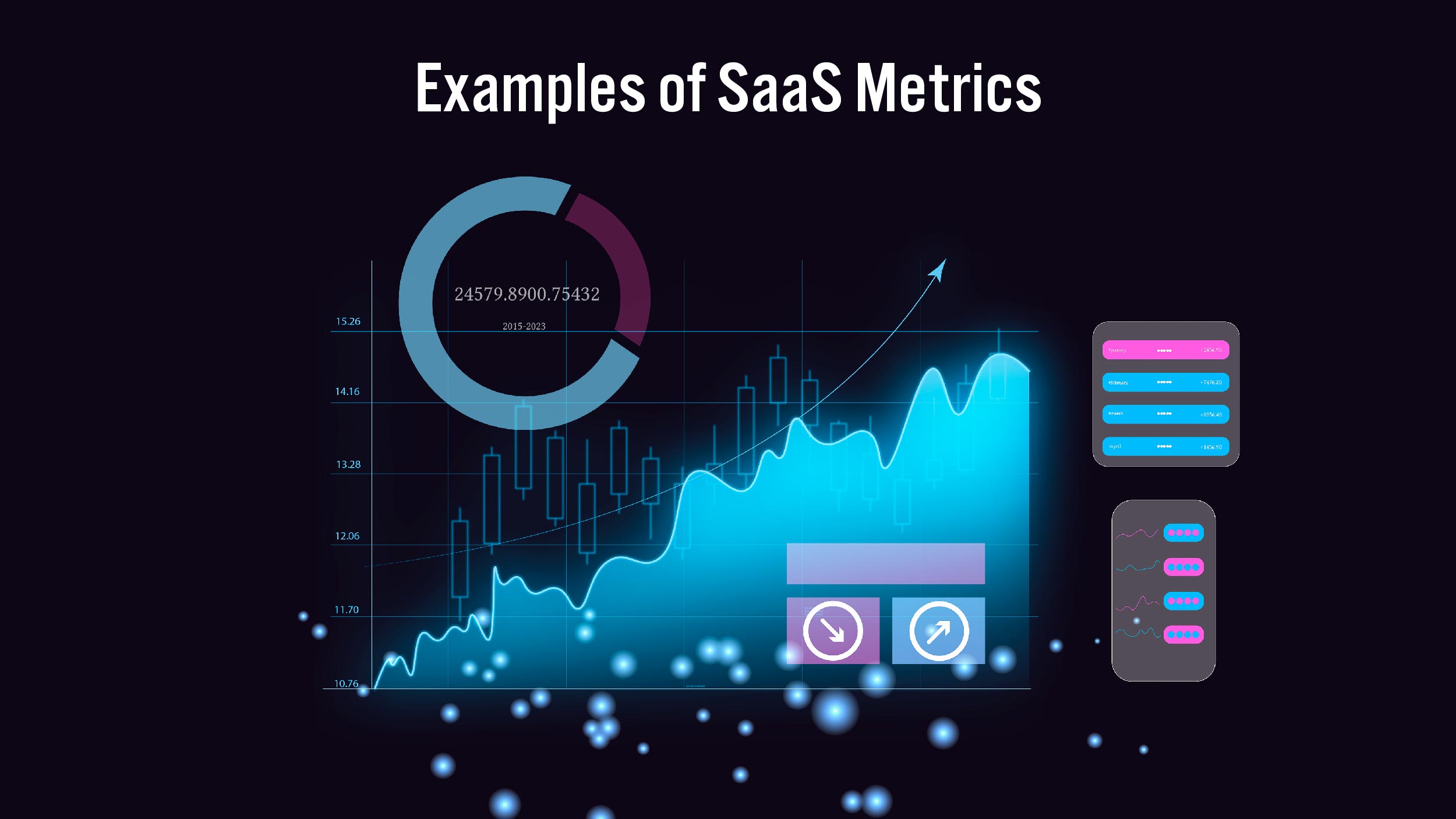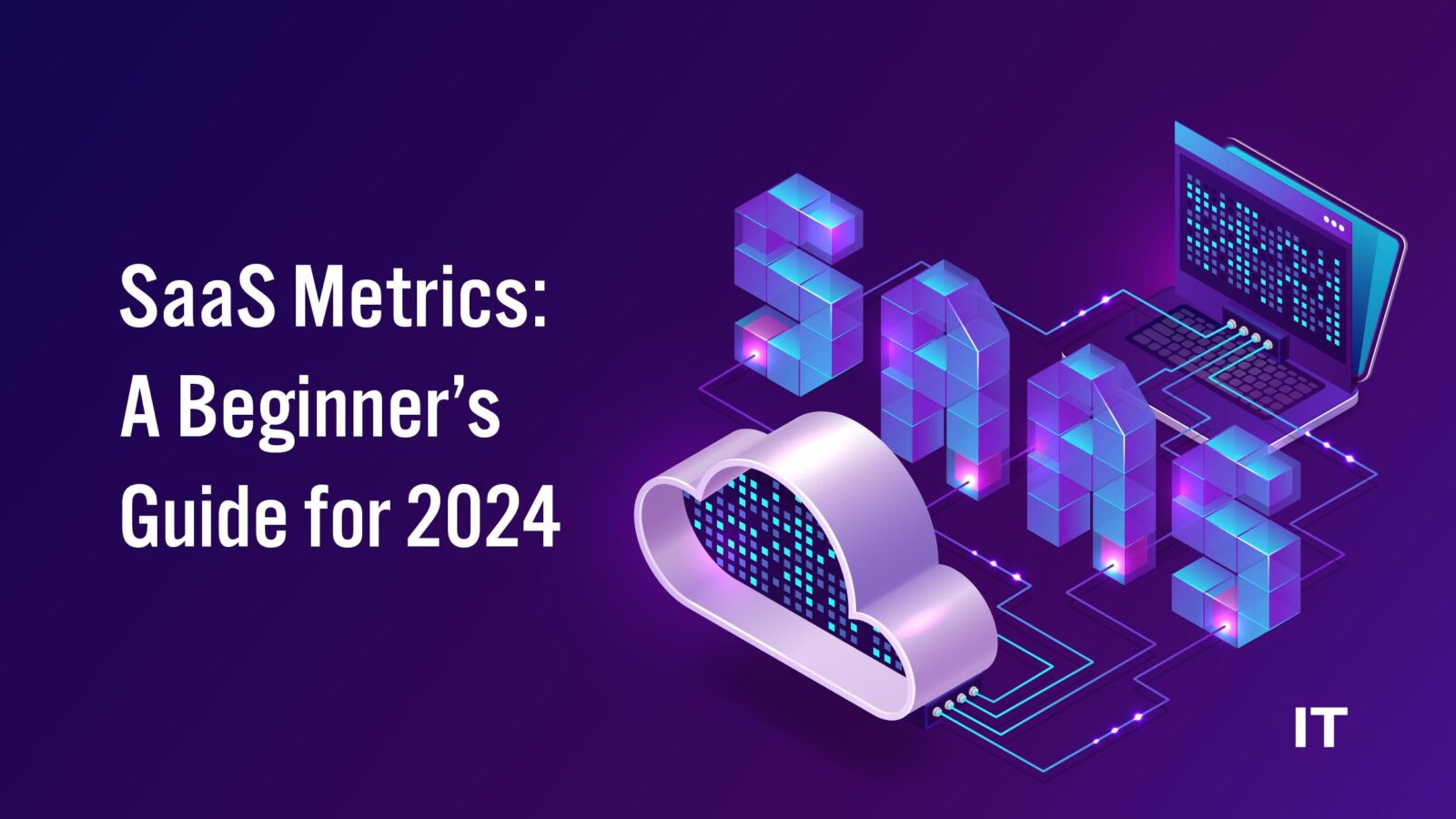Software as a service (SaaS) industry accrued a market valuation of over $195 billion in 2023. This billion-dollar sector is growing at a rapid scale, prompting businesses to analyze and determine the growth of the company.
But, how do you do it? Well, SaaS metrics help you do just that. This helps founders to analyze the right business strategy to determine the direction of business growth. Basically, it is like a roadmap that shows how well your company is performing, what you should do, and importantly what you should not.
Let’s delve in.
What Are SaaS Metrics?
SaaS metrics refer to the crucial data points that software as service companies assess to monitor growth and progression. These metrics typically include annual recurring revenue customer acquisition cost and customer churn. For SaaS founders, the ultimate aim is future growth which can only be accomplished by executing an effective business strategy rooted in growth metrics.
These metrics enable businesses to evaluate their achievements plan for the future and adjust strategies as necessary. Effective metrics act as precursors for predicting customer retention.
They provide insight into how SaaS companies can differentiate themselves from competitors, especially those offering on-premises software, and they also provide the path to achieving steadfast customer devotion. This builds strong relationships, which leads to more growth, money, and profit.
Why Track SaaS Metrics?
 Businesses need to monitor SaaS metrics for several reasons. These indicators provide insightful information about a business’s performance and growth trajectory, enabling them to evaluate their performance, make plans, and hone their strategies.
Businesses need to monitor SaaS metrics for several reasons. These indicators provide insightful information about a business’s performance and growth trajectory, enabling them to evaluate their performance, make plans, and hone their strategies.
Businesses can assess their existing position, pinpoint areas of strength and weakness as well as areas for growth, and strategically plan their future direction by using these indicators as benchmarks. They can also improve their product offerings, allocate resources more efficiently, refine marketing tactics, and eventually spur sustainable growth because of this proactive monitoring.
Businesses can also make strategic decisions by investigating SaaS analytics, which offers vital insights into customer behavior, product usage, and income sources.
Also Read: What is SaaS Integration and Why is it Important for Business?
Organizations may enhance client acquisition and retention efforts, hone their strategies, and foster long-term corporate growth by carefully examining these indicators. Furthermore, SaaS metrics serve as a benchmark for businesses, providing information about how they are doing in comparison to industry norms and rivals. This information can boost investor confidence and assist with fundraising initiatives.
Additionally, firms can more successfully manage their journeys and match their goals with their existing requirements and aspirations by prioritizing certain KPIs at each stage of growth.
Examples of SaaS Metrics
 Customer Churn: When people stop using a company’s services, it’s a big concern for SaaS companies. They need to know how many customers are leaving and when to figure out how to keep them interested. It’s like a race to find new customers once one leaves. Knowing the churn rate helps companies understand how well their business is doing.
Customer Churn: When people stop using a company’s services, it’s a big concern for SaaS companies. They need to know how many customers are leaving and when to figure out how to keep them interested. It’s like a race to find new customers once one leaves. Knowing the churn rate helps companies understand how well their business is doing.- Activation Rate: This shows when users start using a product. For example, with a ride-sharing app, someone activates it when they take their first trip. Then, the company can see how people are using the app and make it better for others. By understanding how users engage, companies can make their products more valuable faster.
- Conversion Rate: This tells how many visitors become actual customers. For SaaS companies, it’s important to know if free trial users become paying customers. Calculating the conversion rate helps companies see where they’re losing users, like if their website isn’t working well.
- Burn Rate: This shows how fast a company is spending its money. If a company runs out of cash, it’s in trouble. By knowing the burn rate, investors can see how long a company can keep going. Companies must keep an eye on this to make sure they’re spending only a little.
- Customer Lifetime Value (CLV): This is about how much money a customer brings in over their time with a company. The longer they stay, the more money they bring in. By figuring this out, companies can plan how to keep customers around. CLV = (Average value of a transaction) x (Average number of transactions) x (Customer lifespan)
- Customer Acquisition Cost (CAC): This shows how much it costs to get a new customer. For SaaS companies, it’s important to make sure this cost isn’t more than what they make from the customer. By knowing this, companies can find the best way to get new customers without spending too much.
- LTV/CAC Ratio: This compares how much revenue a company gets from customers vs how much it costs to get them. Companies want this ratio to be good, ideally around 3:1. If it’s not, they need to work on keeping customers around.
- Monthly Recurring Revenue (MRR) and Annual Recurring Revenue (ARR): These show how much money a company makes in a month or a year from customers. They give a picture of how well the company is doing financially.
- Net Promoter Score (NPS): This measures how loyal customers are. Companies can use this score to see if customers like their product and if they’re likely to recommend it to others. It helps companies adjust early on to keep growing.
Use Cases of SaaS Metrics
Below are some detailed use cases for SaaS metrics:
- Performance evaluation: Monitoring revenue and customer attrition provides insight into the condition and direction of the company.
- Strategic Decision-Making: Data-driven metrics such as ARPU and MRR provide direction on pricing, client targeting, and revenue optimization.
- Financial Planning: Budgeting, resource allocation, and maintaining financial stability are made easier with the help of figures like ARR and MRR.
- Customer Satisfaction: Metrics pertaining to customer satisfaction and engagement aid in monitoring the degree of customer service provided by the business and identifying areas for improvement.
- Comparisons and Investor Relations: By demonstrating growth potential, metrics like CAC, CLTV, and churn rates help the business stand out from the competition and draw in investors.
By tracking and analyzing SaaS metrics, businesses can make informed decisions, identify growth opportunities, improve customer satisfaction, and drive sustainable growth in the competitive SaaS industry.
4 Key Metrics to Measure Your App’s Success
Number of Active Users (NAU)
Identifying the number of users who regularly use your product helps understand user behaviors. By calculating NAU, which includes daily and returning users, you can gauge how many people consistently engage with your app.
This figure is crucial, as it reveals the strength of your user base and highlights potential areas for improvement. Understanding NAU allows companies to identify users at risk of churning and implement strategies to re-engage them effectively.
Seat Utilization Rate
Seat utilization rates measure whether customers are maximizing the value of their subscriptions. Businesses can evaluate if customers are making the most of their subscriptions by assessing the ratio of used seats to total seats.
While a low rate could indicate possible problems like overestimating seat needs or underutilizing the product’s capabilities, a high utilization rate suggests happy consumers who are likely to keep using the product.
Average Sessions per Day
For companies with session-based subscription models, understanding the average sessions per day is crucial. This metric helps set pricing points and informs decisions about feature promotion and optimization.
Businesses can customize strategies to optimize user engagement and profitability by gaining insights into user behavior and preferences through the analysis of user sessions.
Depth of Usage
The depth of usage metric reveals how extensively users engage with your app’s features. Calculated by dividing the number of features used by the total available features, this metric indicates the level of user exploration and satisfaction.
A high depth of usage suggests a well-developed product with intuitive features, while a low depth may indicate areas for improvement in user experience and feature discoverability. Utilizing in-app messaging and intuitive UI design can help improve the depth of usage and enhance overall user satisfaction.
Final Takeaway on SaaS Metrics
Gaining insight, quantifying, and refining the aforementioned SaaS metrics can assist any SaaS company in expanding its clientele and attaining prosperity. Moreover, improvements need not be substantial. Even small tweaks can contribute to the overall betterment of your company.


































